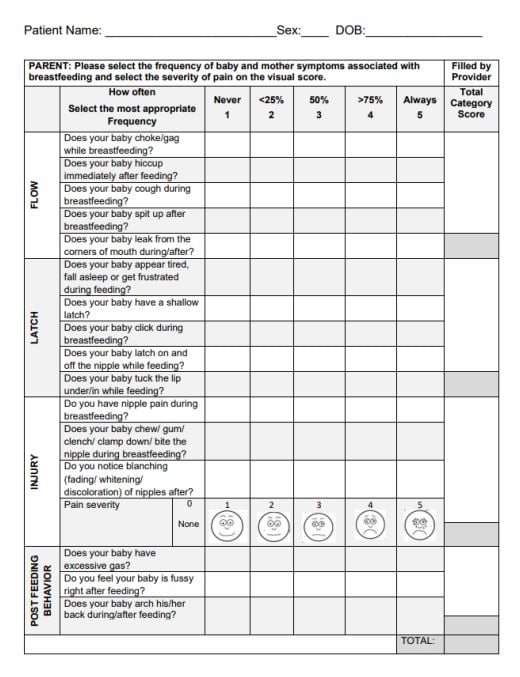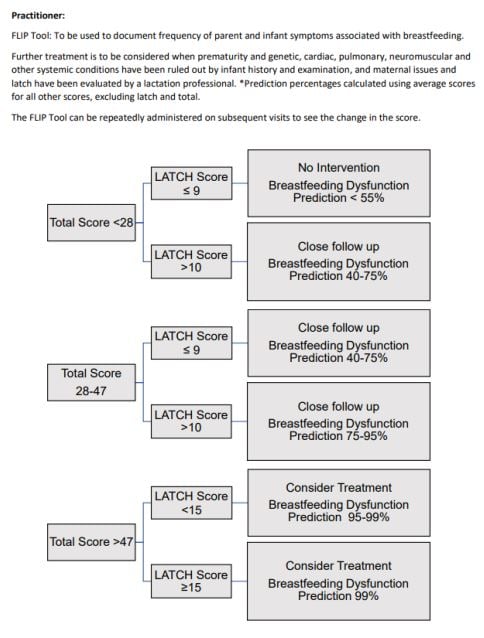Tethered Oral Tissues
Tongue, Lip and Other Restricted Oral Issues
Tongue, Lip and Other Restricted Oral Issues
By completing a comprehensive airway exam, both you and your doctor will be equipped with all the information you need to ensure your achieve your oral health goals.
Please review the following Screening Questionnaire to help you decide if a consult is needed:
FLIP chart, Breastfeeding Disfunction Screening Questionnaire


Ankyloglossia, more commonly referred to as tongue tie, is when the bottom of the tongue is attached to the floor of the mouth by an overly short and thick lingual frenulum. The cause of the condition is not known, but genes may play a role since it tends to run in families.
Some symptoms include a tongue with limited range of motion, trouble sticking out the tongue past the lower front teeth or a tongue that appears notched or heart shaped when stuck out. It can also cause esthetic issues by pulling the gums away from the teeth causing a gap between the lower front teeth.
Ankyloglossia in children can lead to a range of problems, such as difficulties
breastfeeding, speech impediments, poor oral hygiene, and embarrassment
during childhood.
In cases the lingual frenulum attachment is severe enough to interfere with daily life, your doctor will work with you to develop a plan of care to correct the issue and prevent any additional complications for your infant, child or you.
A frenectomy is a simple surgical procedure that can be completed with the use of the CO2 Lightscalpel laser and sutures for adults and older children. The doctor uses sterile scissors or a laser to snip the
frenulum free. The procedure is quick with minimal bleeding or discomfort.
Pre and Post Operative care is extremely important for the success of any surgical procedure or release.
Please use these resources provided by Dr. Richard Baxter, Dr. Chelsea Pinto and The Breathe Institute to help with recovery. It is very important to have therapy pre and post procedure with a qualified therapist in your area or virtually, to help with success of healing.
The Breathe Myo and The Breathe Institute Youtube Videos
Dr Richard Baxter and the Alabama Tongue Tie Center
Myofunctional therapy is a program used to correct the improper function of the tongue and facial muscles. Myofunctional therapy is a series of highly effective physical therapy exercises.
It involves strengthening of the tongue and orofacial muscles by teaching individuals how to engage the muscles to the appropriate position. They also help keep the airway open, especially during sleep.
Myofunctional therapy may also be an effective treatment for sleep-disordered breathing. Sleep-disordered breathing is a group of sleep conditions that cause a reduction in airflow through your upper airways. It includes heavy snoring and obstructive sleep apnea. Myofunctional therapy treatment is safe and relatively inexpensive, which makes it an attractive alternative to other treatments
Proper diagnosis allows for targeted and effective therapy exercises for oral posture to promote better health with the goals to improve breathing, reduce pain and enhance quality of life. Improper patterns can lead to a host of health problems and conditions including:
- Sleep-disordered breathing (including snoring and sleep apnea)
- Bruxism/Clenching
- Neck and shoulder tension
- Headaches
- Gastroesophageal reflux (GERD) or Heartburn
- Orthodontic relapse

.jpg?width=225&height=225&name=download%20(3).jpg)



Regular, preventative care is an affordable choice. Don't wait until it hurts.
735 N. Water Street, Suite 826, Milwaukee, WI 53202 |
Phone: 414-271-1770
Copyright ©2025 Riverwalk Dentistry, SC | All Rights Reserved.
Copyright ©2025
Riverwalk Dentistry, SC
All Rights Reserved